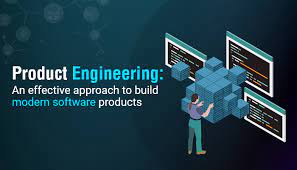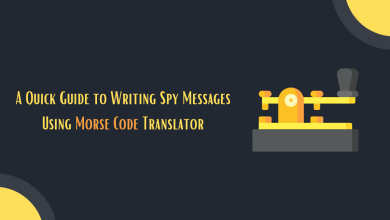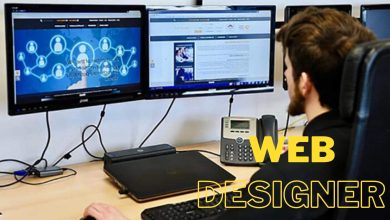The Software Product Engineering Lifecycle: From Concept to Market


Meta – Explore the software product engineering journey, from concept to market success. Learn key phases, best practices, and challenges.
——————————————————————————————————————–
Software products are pivotal drivers of innovation and organizational transformation in the rapidly evolving world of technology and digital business. These products, spanning from mobile applications to sophisticated enterprise software, undergo a multifaceted development journey. This journey is marked by meticulous planning, intricate engineering, and a profound comprehension of market dynamics.
This comprehensive guide is your portal into the intricate world of software product engineering. It serves as a roadmap, guiding you through the entire lifecycle of creating a software product, from its conceptualization to a triumphant market debut. Throughout this exploration, we will navigate the critical phases, uncover best practices, and address the challenges that software product engineers and development teams encounter in their quest to deliver exceptional digital solutions.
Phase 1: Conceptualization
In the Conceptualization phase, the software product’s initial idea is formed based on market research and feasibility studies to define its purpose and ensure viability.
Ideation and Market Research
The journey begins with an idea. Whether it’s a response to a market need or a visionary concept, the first step is to define the product’s purpose. Market research is critical to understanding user needs, competitive landscapes, and technological trends. This phase involves brainstorming, creating a business case, and identifying the value proposition.
Feasibility Assessment
Once the concept takes shape, a feasibility study is conducted. This study evaluates the project’s technical, financial, and operational feasibility. Determining if the project is viable and sustainable in the long run is crucial.
Phase 2: Planning
In the “Planning” phase of software product engineering, a project roadmap is established, a technology stack is selected, and a skilled team is assembled, laying the foundation for the development process.
Project Roadmap
With a clear understanding of the concept’s feasibility, a project roadmap is established. This includes defining project goals, scope, timeline, and resource requirements. It’s the blueprint for the entire software product engineering process.
Technology Stack
Selecting the right technology stack is vital to the success of the project. Choices about programming languages, frameworks, and tools are made during this phase. The technology stack should align with the project’s goals and requirements.
Team Formation
A competent team is essential for executing the project successfully. The team composition may include software engineers, designers, quality assurance professionals, and project managers. Team members are selected based on their skills and expertise.
Phase 3: Design and Development
During this phase, user experience (UX) and interface (UI) design are crafted to create an intuitive and appealing product. Simultaneously, software engineers write code, develop features, and build the product’s architecture.
UX/UI Design
The design phase focuses on creating a user experience (UX) that resonates with the target audience. User interface (UI) design ensures the product is visually appealing and user-friendly. This phase often involves wireframing, prototyping, and usability testing.
Coding and Development
The development phase is where software engineers bring the design to life. They write code, develop features, and build the product’s architecture. Agile methodologies are commonly used to facilitate iterative development and quick adaptation to changing requirements.
Testing and Quality Assurance
Quality assurance is an ongoing process that runs in parallel with development. Testing involves various types, such as unit testing, integration testing, and user acceptance testing. The goal is to ensure the software is defect-free and performs as intended.
Phase 4: Iteration and Enhancement
It involves continuous improvement and adaptation. It’s a stage where software is refined based on user feedback, market changes, and emerging technologies, ensuring ongoing excellence.
Continuous Improvement
The software product engineering process is rarely linear. It often requires iterations and adjustments. Customer feedback, changing market dynamics, and emerging technologies may necessitate modifications to the product. This phase involves revisiting earlier stages to make enhancements.
Phase 5: Deployment
Deployment is the phase in software product engineering where the developed software is prepared and positioned for its intended environment, making it accessible for end-users.
Deployment Strategy
Once the product is ready, a deployment strategy is formulated. It includes decisions about deployment environments (e.g., cloud, on-premises) and release plans. The deployment phase aims to make the product available to end-users.
Phase 6: Market Launch
It involves introducing the software product to the target audience. It encompasses marketing, promotional activities, user training, and ensuring the product’s availability to end-users.
Marketing and Promotion
The market launch is a crucial step in introducing the product to users. Marketing efforts include creating a buzz, launching promotional campaigns, and reaching out to target audiences. A well-planned launch can significantly impact the product’s success.
User Training
User training may be necessary, depending on the complexity of the product. It ensures that users can maximize the software’s features and capabilities. Training may take the form of documentation, tutorials, or workshops.
Phase 7: Post-Launch Support
It involves maintaining the software product after deployment, addressing issues, releasing updates, and providing customer support to ensure smooth and successful user experiences.
Maintenance and Updates
Software products require ongoing maintenance to address bugs, security vulnerabilities, and performance issues. Updates and patches are released to enhance functionality and maintain compatibility with evolving technologies.
Customer Support
Providing reliable customer support is essential for user satisfaction. This includes addressing user inquiries, troubleshooting problems, and offering assistance.
Phase 8: Performance Evaluation
It involves assessing a software product’s success by tracking key performance indicators (KPIs) and analyzing user feedback. This data guides ongoing improvements and ensures alignment with user expectations.
Metrics and KPIs
Measuring the success of the product is essential. Key performance indicators (KPIs) are defined to assess its performance and impact. User engagement, user satisfaction, and revenue generation metrics are tracked.
Feedback Loop
Continuous improvement is based on feedback. User feedback is collected and analyzed to identify areas for enhancement. Feedback loops help ensure that the product remains aligned with user expectations.
Conclusion
The software product engineering lifecycle is a multifaceted journey that demands careful planning, technical expertise, and a deep market understanding. Each phase plays a pivotal role in delivering a successful software product, from conceptualization to market launch and post-launch support.
In today’s competitive landscape, software product engineering is not a one-time endeavor but an ongoing commitment to excellence. With user-centric design, agile methodologies, and a focus on continuous improvement, software engineers and development teams can navigate this complex journey and deliver products that significantly impact the digital world.
As technology evolves, the software product engineering lifecycle will adapt and expand, providing opportunities for innovation and growth. It’s a dynamic journey that promises to redefine industries and create transformative digital experiences for users worldwide.




